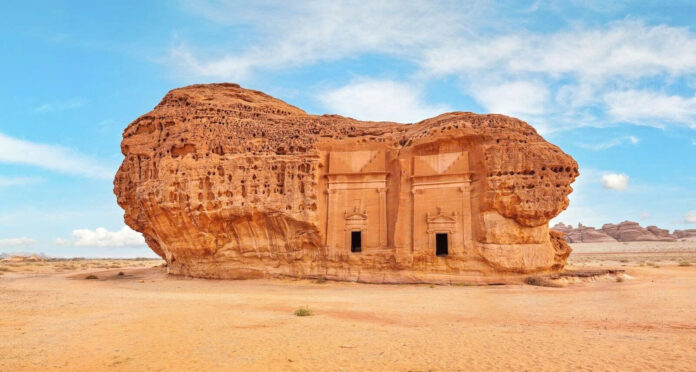In the vast deserts of Saudi Arabia lies a treasure that remained hidden from the world’s eyes for centuries. Hegra, also known as Mada’in Saleh, stands as a testament to an ancient civilization’s brilliance and Saudi Arabia’s rich historical tapestry. When the Kingdom opened its borders to international non-Muslim tourists in 2019, this 2,000-year-old masterpiece finally received the global attention it deserves.
The Mysterious City of the Nabateans
Walking through Hegra feels like stepping into a time capsule. The sun casts long shadows across the 111 tombs carved meticulously into golden sandstone cliffs. These structures, dating back to the first century BC, tell the silent story of the Nabateans – the same ancient Arab civilization that created Jordan’s famous Petra.
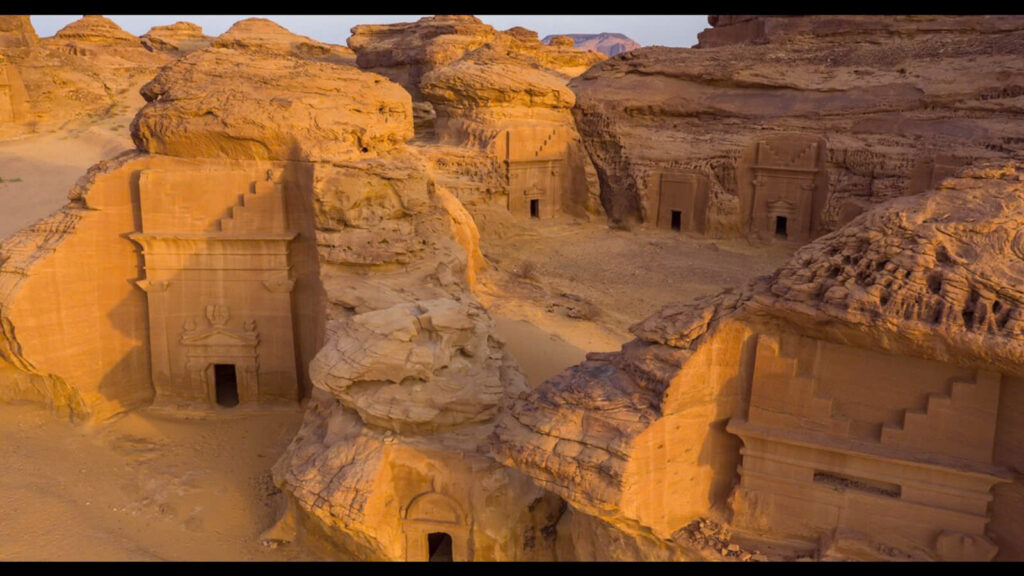
Hegra wasn’t just any settlement; it was the second-largest city of the Nabatean Kingdom, which once stretched across parts of modern-day Jordan, Israel, Egypt, Syria, and Saudi Arabia. What began as a thriving city eventually transformed into an elaborate necropolis, a city of the dead, showcasing the Nabateans’ architectural genius and artistic prowess.
The Lonely Castle and Beyond
The most iconic structure at Hegra is the majestic Qasr al-Farid, aptly nicknamed “The Lonely Castle.” Standing 72 feet tall and carved from a single massive sandstone outcrop, this unfinished tomb stands in solitary grandeur, embodying the site’s haunting beauty.
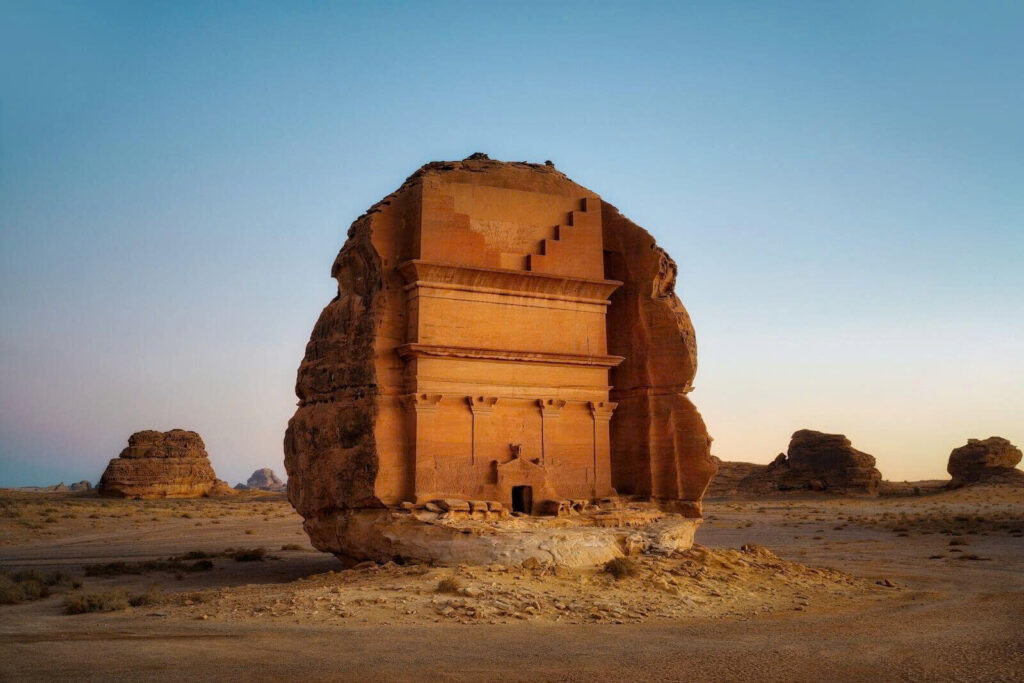
But Hegra offers more than just tombs. The site reveals the Nabateans’ remarkable engineering skills through their water management systems. In a landscape where water meant life, they created intricate networks of wells, cisterns, and reservoirs that allowed their civilization to flourish in the harsh desert environment.
A Journey Through Time and Landscape
How to Reach This Ancient Wonder
Located in the Medina Province within Saudi Arabia’s Hejaz region, Hegra is surprisingly accessible to modern travelers. The nearby city of AlUla serves as the gateway, with its international airport connecting to major cities like Dubai, Riyadh, Jeddah, and Damman.
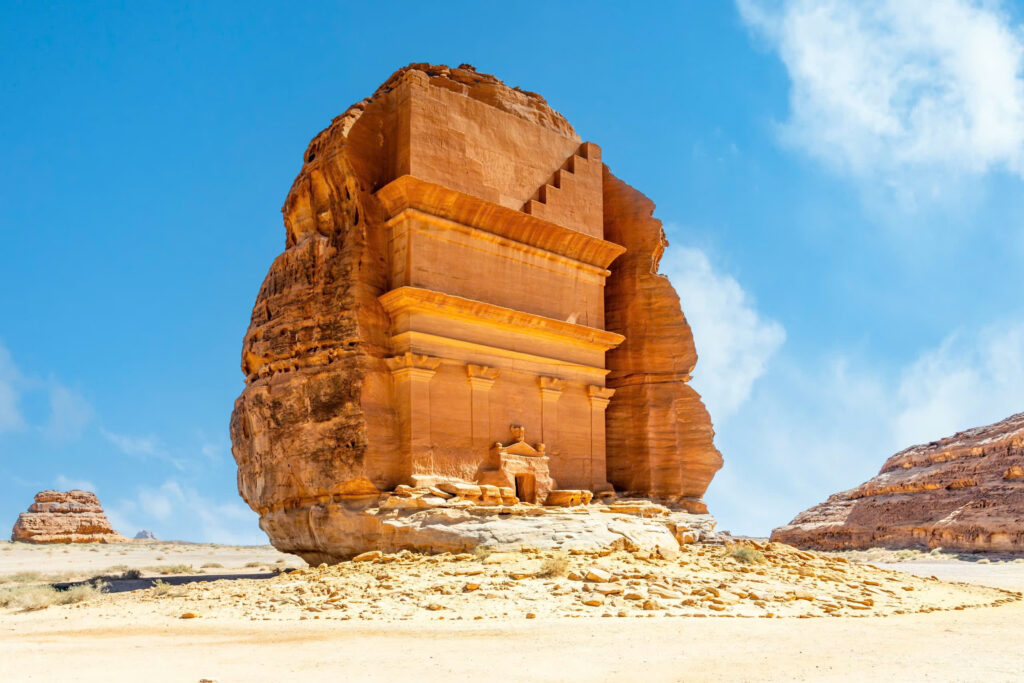
From AlUla, a scenic 35-minute drive (about 26 miles) takes visitors to this UNESCO World Heritage site. And for those interested in modern architectural marvels, the Maraya Concert Hall – the world’s largest mirrored building – sits just 11.6 miles away, creating a fascinating juxtaposition of ancient and contemporary genius.
Petra’s Sister: Same Family, Different Personality
While often compared to Petra in Jordan, Hegra offers a distinctly different experience. Both sites showcase the Nabateans’ architectural brilliance, but Hegra provides a more intimate encounter with history. Without the crowds that often fill Petra’s corridors, visitors can experience the whispers of the past in relative solitude, making for a more personal connection with history.
From Forbidden to Welcoming
Overcoming Ancient Superstitions
For centuries, Hegra and the surrounding AlUla region were shrouded in mystery and fear. Local legends claimed the area was cursed and haunted by jinn (malevolent spirits in Arab folklore). Some even believed that Prophet Muhammad had warned against visiting this ancient site.
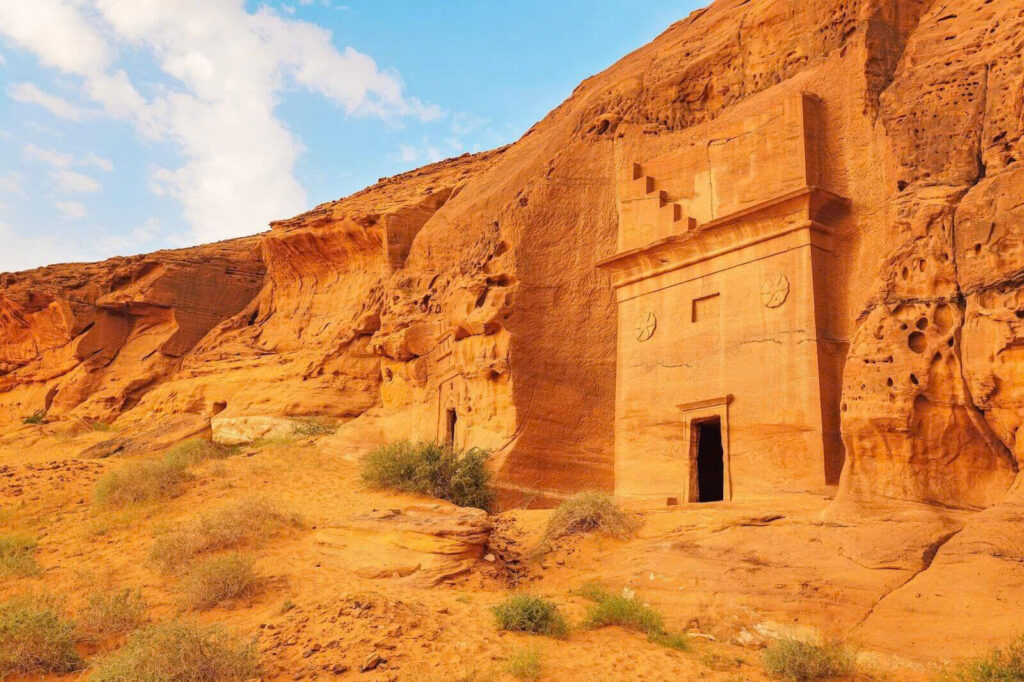
These superstitions kept many away, inadvertently preserving the site. Today, as Saudi Arabia emerges as a prominent tourist destination, these ancient fears have faded into folklore. Both Muslim and non-Muslim visitors now freely explore the wonders of Hegra, though the holy cities of Mecca and Medina remain exclusive to Muslim pilgrims.
Saudi Arabia’s UNESCO Pride
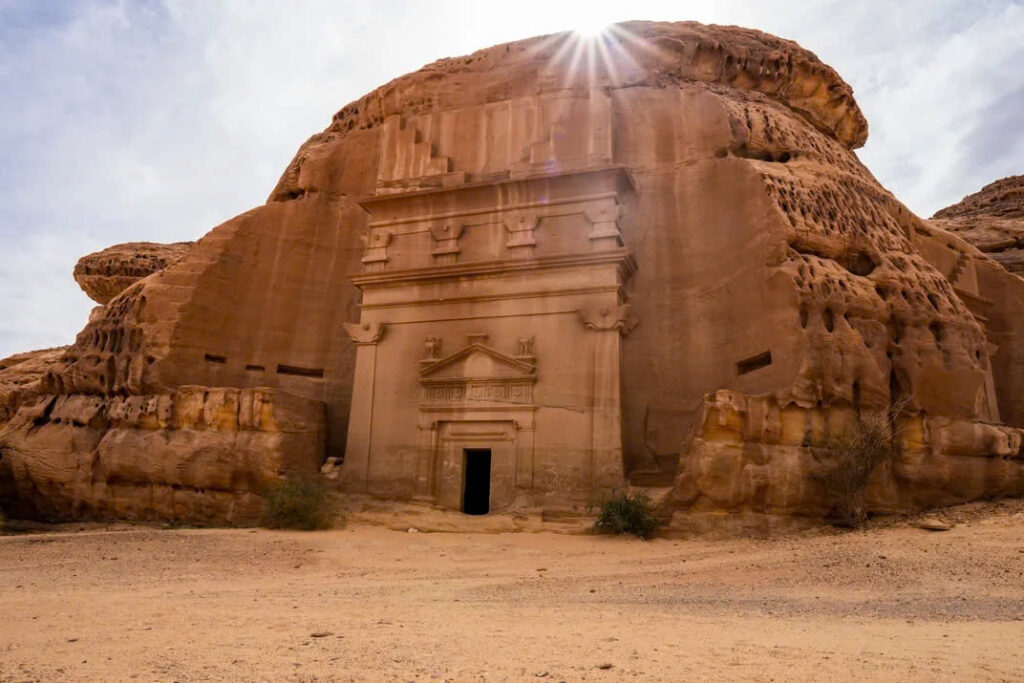
In 2008, Hegra achieved the distinction of becoming Saudi Arabia’s first UNESCO World Heritage site. This recognition catapulted the site onto the global stage, highlighting its historical significance and outstanding universal value. Today, it stands as one of seven UNESCO-listed sites in the Kingdom, with 14 more on the tentative list.
Video
The Layers of History
The monuments of Hegra may date from the first century BC to the first century AD, but human presence in this region stretches back much further. Archaeological evidence suggests humans have inhabited this area for 15,000 to 20,000 years.

It’s worth noting that during the Nabatean era, Saudi Arabia as we know it today didn’t exist. The modern Kingdom of Saudi Arabia was established relatively recently, on September 23, 1932, while the Nabatean civilization flourished long before the birth of Islam in the 7th century.
Embracing the Future While Honoring the Past
As Saudi Arabia continues its journey toward becoming a global tourism destination, Hegra stands as a bridge between past and present. This archaeological wonder invites visitors to contemplate the achievements of ancient civilizations while witnessing a nation embracing a new future.

For travelers seeking experiences beyond the ordinary, Hegra offers a rare opportunity to explore an archaeological masterpiece that rivals the world’s best-known ancient sites, but with the unique advantage of being relatively undiscovered. It’s a chance to walk in the footsteps of the Nabateans before the rest of the world catches up.
In the silence of Hegra’s tombs and the vastness of its desert landscape, one can’t help but feel a connection to the humans who lived, loved, and created in this place two millennia ago – a reminder that across time and cultures, we share the same human story.
